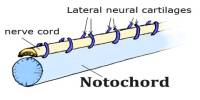Cultivated plant taxonomy is the science that identifies, defines, classifies, and names cultigens—those plants whose origin or selection is predominantly attributable to intentional human action. It is a branch of plant taxonomy that focuses on the classification, identification, and naming of cultivated plants. It is also known as agricultural taxonomy or crop taxonomy.
Cultivated plant taxonomists, on the other hand, work with a wide range of plants in culture. It is important in agriculture and horticulture because it provides a systematic framework for organizing and interpreting the diversity of cultivated plants, which are generally grown for food, fiber, fuel, medicine, and ornamentation.
Cultivated plant taxonomy is one part of the study of horticultural botany which is mostly carried out in botanical gardens, large nurseries, universities, or government departments. Areas of special interest for the cultivated plant taxonomist include: searching for and recording new plants suitable for cultivation (plant hunting); communicating with and advising the general public on matters concerning the classification and nomenclature of cultivated plants and carrying out original research on these topics; describing the cultivated plants of particular regions (horticultural floras); maintaining databases, herbaria and other information about cultivated plants.
Here are some key aspects of cultivated plant taxonomy:
- Plant Classification: It divides cultivated species into taxonomic groups such as genera, families, orders, and classes. The major purpose is to classify plants based on physical, genetic, and evolutionary similarities.
- Naming and Nomenclature: Cultivated plant taxonomy, like traditional plant taxonomy, follows a set of principles for naming cultivated plants. The International Code of Nomenclature for Cultivated Plants (ICNCP) oversees cultivated plant nomenclature, with precise standards and practices in place to guarantee that names are stable and generally understood.
- Varieties and Cultivars: Cultivated plants often have a high degree of variability due to human selection and breeding. As a result, cultivated plant taxonomy includes the classification of varieties and cultivars (cultivated varieties) within species. These are often named and described based on distinctive characteristics.
- Cultivated Plant Identification: Taxonomists and horticulturists work together to identify and classify cultivated plants accurately. This involves studying various plant features, such as leaves, flowers, fruits, and growth habits, as well as using molecular techniques for genetic identification.
- Germplasm Collections: It is essential for the management of germplasm collections in gene banks and botanical gardens. These collections serve as repositories of genetic diversity and play a crucial role in plant breeding and conservation efforts.
- Historical and Cultural Significance: Some cultivated plants have deep historical and cultural significance. Taxonomy helps trace the origins and evolutionary history of these plants and sheds light on their importance in human society.
Understanding cultivated plant taxonomy is critical for crop development efforts. It assists breeders in selecting parent plants with desirable features and making informed hybridization and selection decisions. It is also crucial in terms of plant protection and quarantine legislation. Plant pest and disease identification and classification are critical for international trade and biosecurity.
Cultivated plant taxonomy, as a whole, is a specialist field that bridges the gap between traditional plant taxonomy and agriculture. It provides a structured framework for organizing and controlling the diverse range of grown plants required for human subsistence and economic development.
















